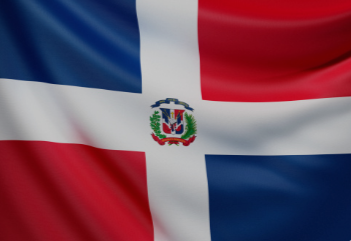Welcome to a journey into the vibrant world of Dominican Republic flag symbolism! A fascinating exploration awaits as we unravel the layers of meaning behind this iconic emblem. Join us as we delve into the rich history, colors, and symbols that make up the captivating story of the Dominican Republic flag. Let’s set sail on this adventure together!
The Meaning Behind the Colors: Red, White, and Blue
The colors of the Dominican Republic flag hold deep symbolism that reflects the nation’s history and values. Red symbolizes the blood shed by the country’s heroes for independence, evoking courage and sacrifice. White represents peace and unity among its people, reflecting harmony and solidarity in diversity.
Blue is a reminder of liberty and freedom, signifying the ideals of progress and opportunity. Together, these colors blend harmoniously to embody the spirit of a resilient nation that cherishes its past while looking towards a brighter future.
The vibrant hues not only adorn flags but also resonate in the hearts of Dominicans worldwide as a proud emblem of their heritage. It serves as a beacon of hope and inspiration, uniting generations under one banner that signifies strength, resilience, and national pride.
The Cross and Its Significance
The cross on the Dominican Republic flag holds deep significance. Positioned at the center, it symbolizes the country’s unwavering faith and strong Christian roots. It reflects the importance of religion in shaping Dominican culture and values.
Beyond its religious connotations, the cross represents unity and solidarity among the people of the Dominican Republic. It serves as a reminder of their shared history and common goals for a better future.
The equal arms of the cross also allude to balance and harmony, emphasizing stability and peace within the nation. Its presence on the flag underscores a sense of identity and pride among Dominicans worldwide.
This prominent symbol speaks volumes about tradition, spirituality, community, and resilience embedded in every thread of the Dominican Republic flag.
The Coat of Arms: History and Symbolism
When exploring the Dominican Republic flag, one cannot overlook the intricate Coat of Arms nestled in the center. This emblem holds a rich history and profound symbolism that speaks volumes about the country’s heritage. The shield is divided into four quarters, each representing different aspects of Dominican identity.
In the first quarter, we see a Bible with a cross above it, symbolizing faith and Christianity’s influence on the nation. The second quarter displays a blue ribbon with the national motto “Dios, Patria, Libertad,” meaning “God, Fatherland, Liberty.” This phrase underscores core values cherished by Dominicans throughout history.
The third quarter exhibits arrows and an olive branch intertwining – illustrating war and peace existing side by side. There are three spears topped with red Phrygian caps symbolizing sacrifices made for freedom during colonial times. Together, these elements encapsulate centuries of struggle and resilience embodied in the Dominican people’s spirit.
How the Flag has Evolved Over Time
The evolution of the Dominican Republic flag tells a story of resilience and identity. Initially adopted in 1844, the flag featured a white cross on a blue background, symbolizing the country’s connection to Christianity and freedom from colonial rule. Over time, modifications were made to incorporate elements like the national coat of arms.
In 1863, during Spanish occupation, changes were implemented to reflect allegiance to Spain. However, upon regaining independence in 1865, the original design was restored with minor adjustments. The addition of red stripes signified the bloodshed by patriots for liberty.
Throughout history, different governments influenced alterations on the flag until a final standardized version was established in 1908. This version remains largely unchanged today and is proudly displayed as a symbol of unity and national pride among Dominicans worldwide.
Contemporary Use and Representation of the Flag
In contemporary times, the Dominican Republic flag continues to hold immense significance as a symbol of unity and pride for its people. Whether proudly displayed during national holidays or waved enthusiastically at sporting events, the flag serves as a powerful representation of the country’s rich history and cultural heritage.
You can often spot the flag adorning government buildings, schools, and public spaces across the nation. Its vibrant colors evoke a sense of patriotism among Dominicans both at home and abroad. The flag is not just a piece of cloth; it embodies the shared values and aspirations of an entire nation.
In recent years, social media has become a platform for Dominicans to showcase their love for their flag. From profile picture overlays to hashtag campaigns celebrating national achievements, the flag remains a prominent feature in digital spaces too.
Celebrating the Rich Symbolism of the Dominican Republic Flag
The Dominican Republic Flag represents a rich tapestry of history, culture, and identity. Its vibrant colors, the central cross, and the elaborate coat of arms all come together to tell a powerful story of resilience and pride.
As we celebrate this emblem that flies high over the beautiful Caribbean nation of the Dominican Republic, let us remember its deep symbolism. May it continue to serve as a reminder of the country’s past struggles and triumphs while uniting its people under a common heritage.
Next time you see the Dominican Republic Flag waving proudly in the breeze, take a moment to reflect on its significance. It is not just a piece of cloth; it is a symbol of national unity, strength, and hope for a brighter future. Let us honor and respect this flag that represents so much more than meets the eye.
